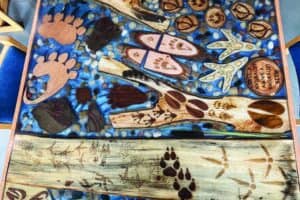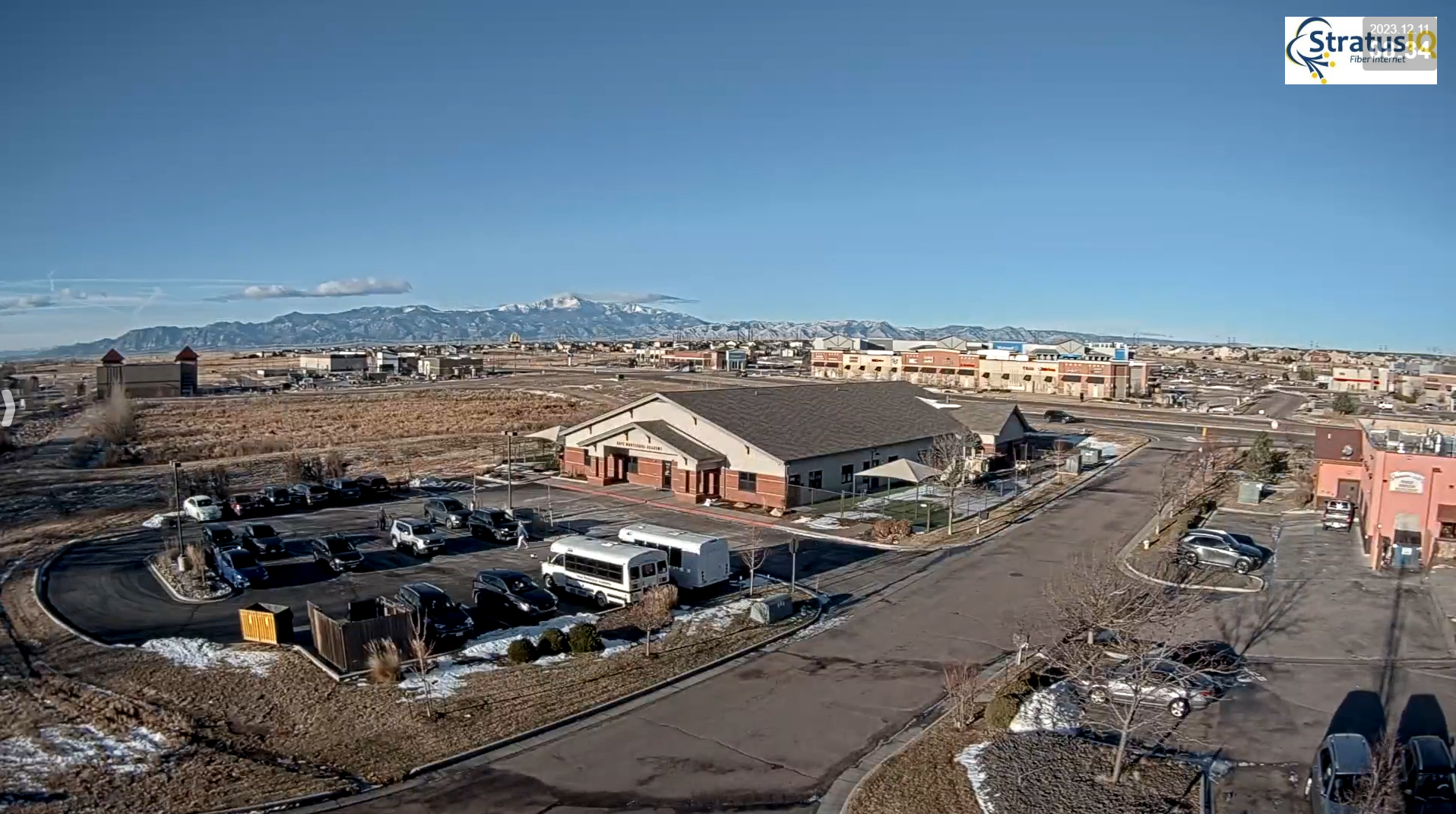By Jon Huang
Sometimes at the El Paso County Coroner’s office, it’s the smallest set of living jaws in the office that comes up big.
When an autopsy requires additional skeletal examination and the usual methods of removing tissue from bone can cause too much damage, a body is placed in a 6-foot tank of beetles. This species of beetles, scientifically referred to as Dermestes maculatus, is commonly known as the hide beetle or dermestid beetle.
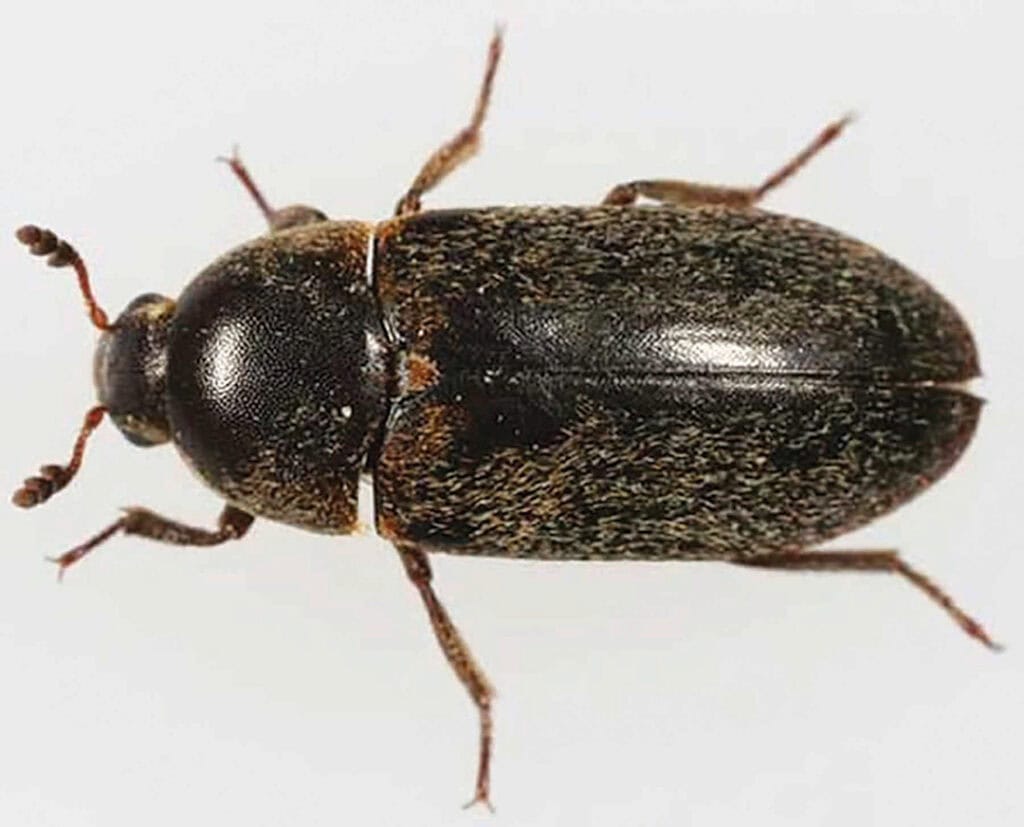
When a body dies, it attracts various insects that can help investigators determine how long the body has been decomposing. As a result, prior to placing it in the tank, the body is frozen to kill off these other insect species, which can often compete with dermestids. Once the cleaning is complete, the bones are sent to a forensic anthropologist for additional examination and testing.
El Paso County is the only coroner office in the state with dermestids.
All of this came about because a stressed financial planner decided to study feces.
Scott Fortney was a local investment advisor looking for an outlet from the pressures of his day job.
“My wife told me I needed to get a hobby,” Fortney said.
In 2005, out of his own curiosity, Fortney began investigating the cause of a 30% decline of dung beetles, conducting studies at the Cheyenne Mountain Zoo. Dung beetles play a pivotal role in decomposing animal manure, allowing its nutrients to be taken up in the soil, helping grass to grow through it and eliminating breeding grounds for flies that adversely affect livestock.
“The zoo gave me a quarter-acre of land back there and I would come up and grab elephant, hippo and gorilla poop,” Fortney said. “I’d spread it to see which beetles showed up; and, while that project was taking place, we lost a hippo and somebody said, ‘Hey isn’t there a way we can clean that up?’ And I made the mistake of saying, ‘yeah,’ and here we are 20 years later looking at this.”
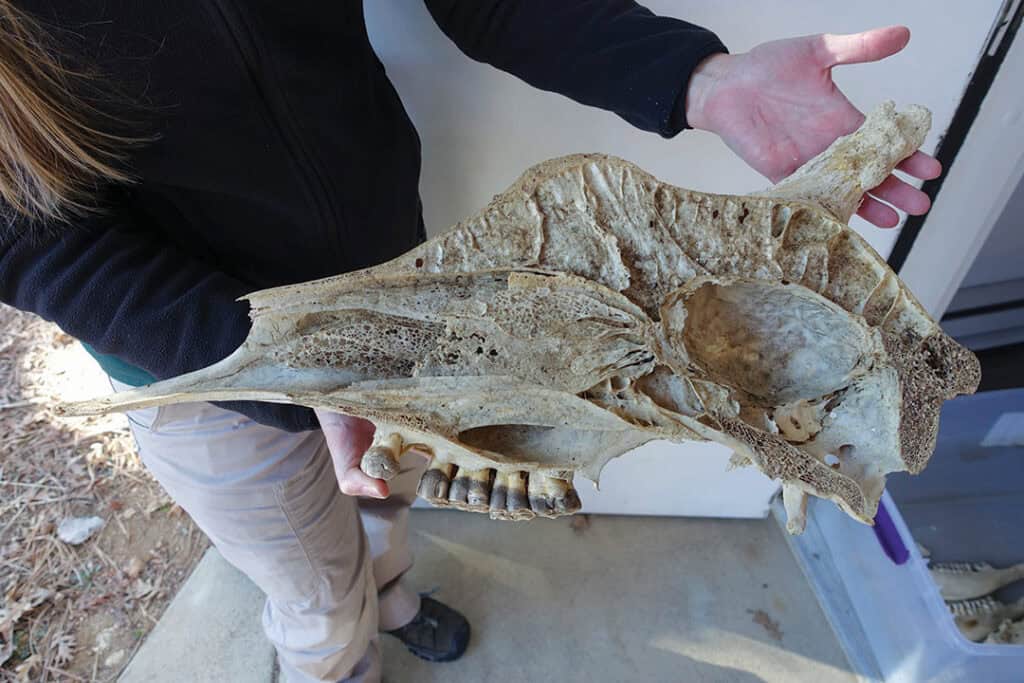
Fortney obtained a colony of dermestid beetles from the Smithsonian and began using them to clean animal carcasses for the zoo. About five years ago, the coroner’s office began using the beetles for their autopsies. After the process, the beetles were temporarily housed during a renovation project at the zoo. The coroner’s office decided they wanted their own colony.
Dermestids have lifespans up to 18 months to two years. Adults are generally between 5-10 mm in length; depending on food availability and living conditions, they can reproduce several generations worth of offspring in a year. Depending on the colony size as well as the condition of the specimens, decomposition can take days to months. Fortney has watched them clean a naked mole rat in 12 minutes. Dermestids primarily eat dead tissue and are known as scavengers, eating things like flowers, pollen, leather and wool. They’ve been known to wreak havoc on preserved animal specimens in museums. They fly and typically do so when temperatures become unsuitable or the food runs out.
Fortney typically feeds the beetles dead animals from the zoo, but over the years, the beetles’ diet has included a variety of choice cuts. Fortney has obtained dead calf carcasses from a rancher in La Junta, old hamburger patties, roadkill and spoiled meat from people with malfunctioning fridges. Outside organizations like the Pueblo Zoo have also sent specimens for cleaning.
“When all else fails, then we feed hot dogs. It’s only beef hotdogs,” he said. “Chicken or turkey, they won’t go near them. They’re very selective.”
For Fortney, the odors associated with decomposing flesh can be particularly onerous. For this reason, the zoo’s colony is kept in a side room outside the zoo’s veterinarian clinic. For Fortney, the smell of a decomposing hippo was tolerable but the elephant was not. Consequently, he’s foresworn doing the latter again. Despite the strong smells, taking care of them has been a breath of fresh air.
“These guys never asked me what the stock market did today,” he said. “They don’t care. This is my mental break for the rest of the week.”
The animal skeletons are used for educational presentations at schools to demonstrate anatomy and skeletal pathology. They provide children an up-close view of where nerves exit from the spine and what advanced spinal arthritis on a tiger looks like.
Fortney is working toward a master’s degree in entomology. For most people, insects are viewed in terms of their nuisance, links with illness and destruction; to him, they are also part of an interconnected ecosystem, which humans are part of and depend on. Whether they are serving to assist plant growth or as nature’s scavengers and decomposers, studying insects like dermestids has increased his appreciation for the world around him.
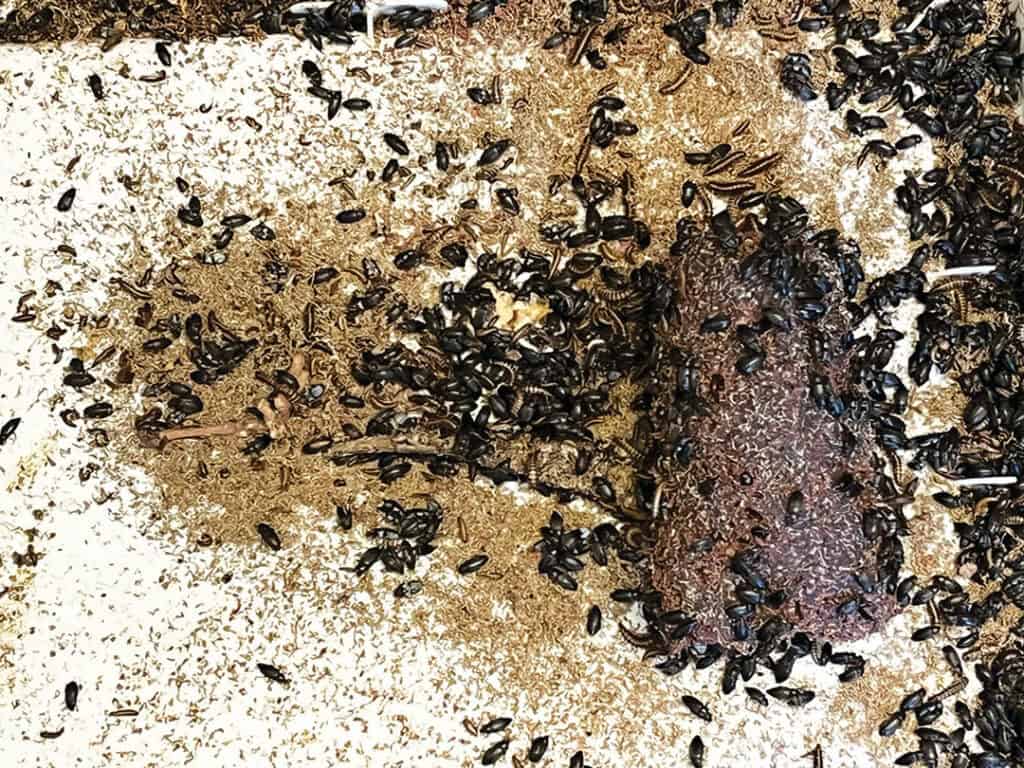
“If it wasn’t for dermestid beetles, we would have infection and illness from decaying and rotting meat,” Fortney said. “Other things would cause us other issues. The dermestids break that down to an organic level, provide it back into the soil and provide fertilizer … like dung beetles.”
As for dung beetles, Fortney discovered the cause of their decline was the equestrians who were using ivermectin, the same antiparasitic medication that garnered national acclaim during the COVID 19 pandemic. The medication in the feces were killing the beetles.
Whether the dermestids are helping the coroner’s office solve a perplexing case, enriching the soil or helping a financial planner maintain his sanity, they demonstrate that on the right stage, despite their diminutive size, they, too, have a productive role to play in the community.





